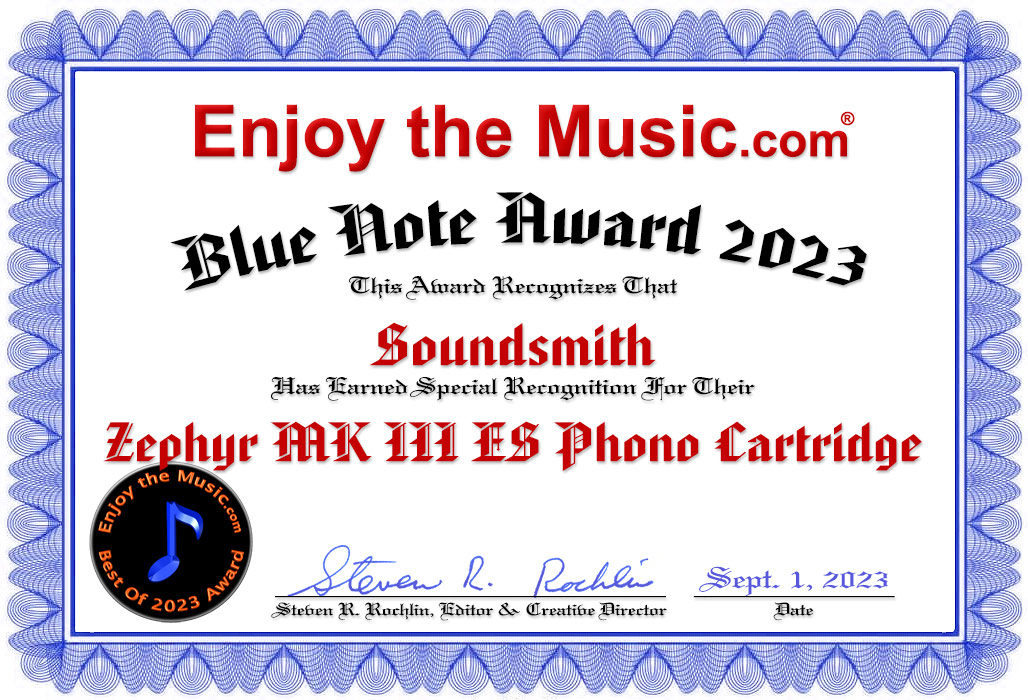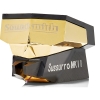Do I Need Anti-skating?
YES – you DO need anti-skating. It is just simple physics. BUT...the industry has gotten it WRONG. (See my notes at the end of this anti-skating message for more details.)
Make sure that the anti-skating is well set; there are many ways to tell, but this is a method suggested by Frank Schroder, with which we heartily agree. PLEASE NOTE – this will not agree or work with test records designed for higher amounts of anti-skating. The reasoning from Frank Schroder for this method and level of A-S skating is as follows: the level of anti-skating used should create EQUAL forces on each groove wall for *most* of the record. Since this force is dependent on the level of recorded modulation (how loud the recorded music is on the disk) setting it for a “worst case” “loud music passage” level is totally inappropriate. Setting it where it provides equal force per groove wall for where music spends 80-90% of its time is simply correct - 30-40% average modulation level antiskating adjustment makes FAR more sense, both from the standpoint of listening, and wear.
Procedure:
When you have it adjusted right, the arm will track on the SURFACE of the record (not in the groove) at the end of the record on the un-pressed flat space where the run-out groove is – it should track SLOWLY INWARDS toward the center at a MUCH SLOWER RATE than IF IT WERE ACTUALLY in the end groove. If you do that, then the best average Anti-Skating is set correctly.
The following is useful, but not all-telling. With medium or high compliance cartridges (NOT with most moving coil design), look at the position of the cantilever when it is up in the air, and when it is on the record, both at the beginning and at the end. Look for a change in position initially upon set-down, as well as after 1-2 minutes. If you DO THIS BEFORE adjusting as above, you will have a gross method to verify that you have problems with skating forces, as it should not change position. If it does, the A-S is VERY wrong. The best way to tell if it is very wrong is to look how the cartridge behaves on the flat surface, as described above.
Almost always, most tables are set so they have too much anti-skating, or an adjustment that cannot be turned down enough, OR the range and fine control is terrible, or you have none.
Usually, most folks use far too much anti-skating, as evidenced by the thousands of cartridges I have rebuilt over the last 40+ years; the outer edge (right channel) of the diamond will be worn far more than the inner, or left channel.
Frank Schroder and I are of the same opinion about anti-skating – and that renders MOST records that provide an anti-skating track totally in error – they are recorded at about 80-90% modulation — or HIGHER — and expect you to set the A-S force so that there is no distortion (or equal amounts on both channels if the cartridge tracks poorly).
The problem with these tracks is that since the required level of A-S force is dependent of the amount of modulation, it has you adjust anti-skating at far too high a level. This would be OK, if you are listening to music that is (by nature of the music) at constant maximum crescendo, without normal musical dynamics — going from loud to soft. Very few pieces of music are like this. When you adjust for this level on a “test record," that means that you have overcompensated with far too much anti-skating as you have adjusted it for where music does NOT spend most of its time. Most music is at about 30-40% modulation levels, and adjusting the A-S with these “test” records results in far too much A-S force; too much stylus force on the right channel, and far too little on the left.
Since there is no properly recorded track that allows proper setting of A-S (there will be such on our new Soundsmith adjustment record), the method that Frank Schroder discovered through careful reverse engineering works without tools, and without a special record.
If one sets the stylus on a smooth surface of a record (at the end, in-between the run out grooves) – the tip of the stylus has a drag on the surface that somewhat similar to what it would have if it were in a groove. This is due to a calculation of “force per unit area” with consideration of the rheology of the material – vinyl.
Suffice it to say that it is “similar” enough for this method to work well, especially since the method was reverse engineered/calibrated properly by Frank Schroder to be correct for 30-40% record modulation. It then becomes an easy matter to set the A-S and observe the movement of the arm. For a given VTF (any amount of VTF), set the A-S so that the arm VERY SLOWLY drifts inwards when placed on the SURFACE (NOT IN A GROOVE) at the end of a record. You will have a moment to do this until the stylus “pops” into the run-out groove.
This works for ANY amount of VTF required, for ANY cartridge. It will set the A-S for EQUAL force per groove wall for 30-40% groove modulation levels, at ANY VTF, for ANY cartridge. If you are wondering about the scientific or engineering aspect of WHY this works for any cartridge and any stylus configuration, it is because the actual tip shape of the stylus is almost identical regardless of the design of the stylus tracing surfaces. That means the the frictional coefficient of the same for any design. Since more VTF causes more stiction, there will be a higher requirement for A-S force. All other considerations are secondary, or tertiary - such as stylus shape, variations in vinyl density, and so on. First Order considerations are fine here, as the Anti-skating requirement is a moving target anyway.








